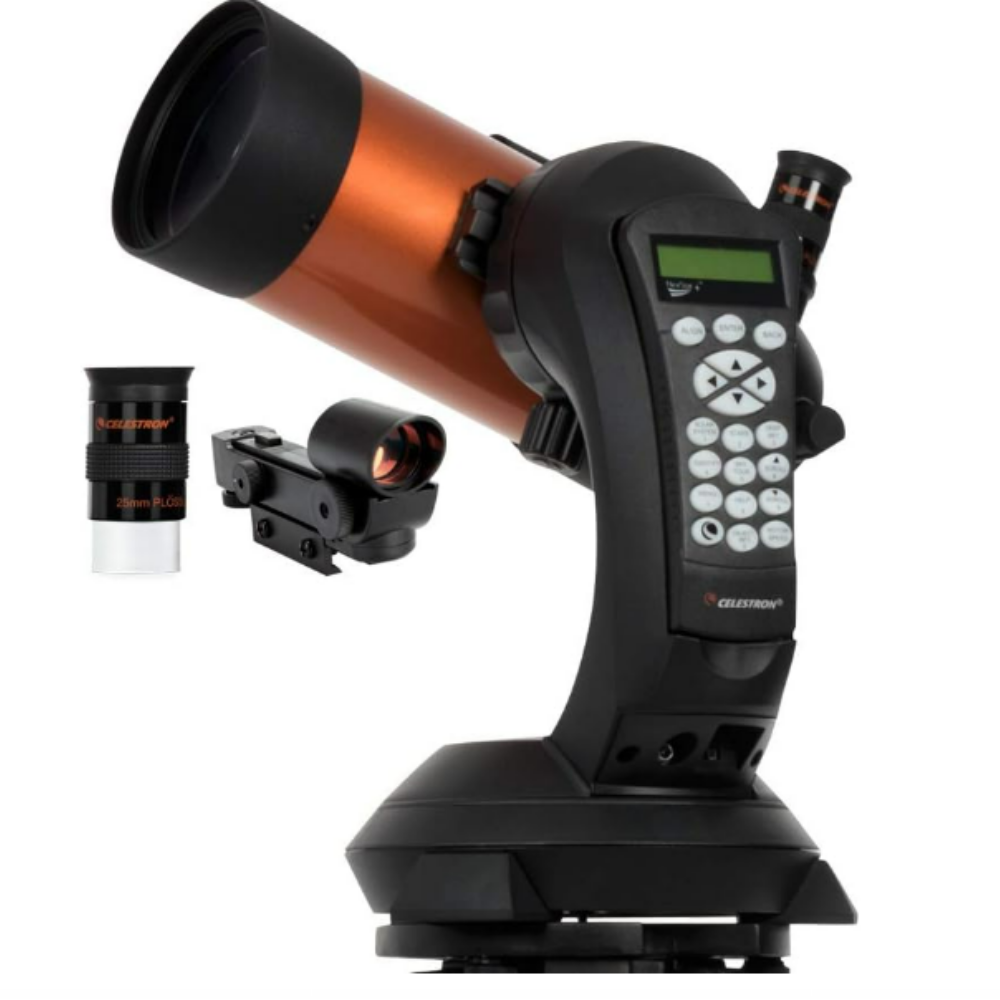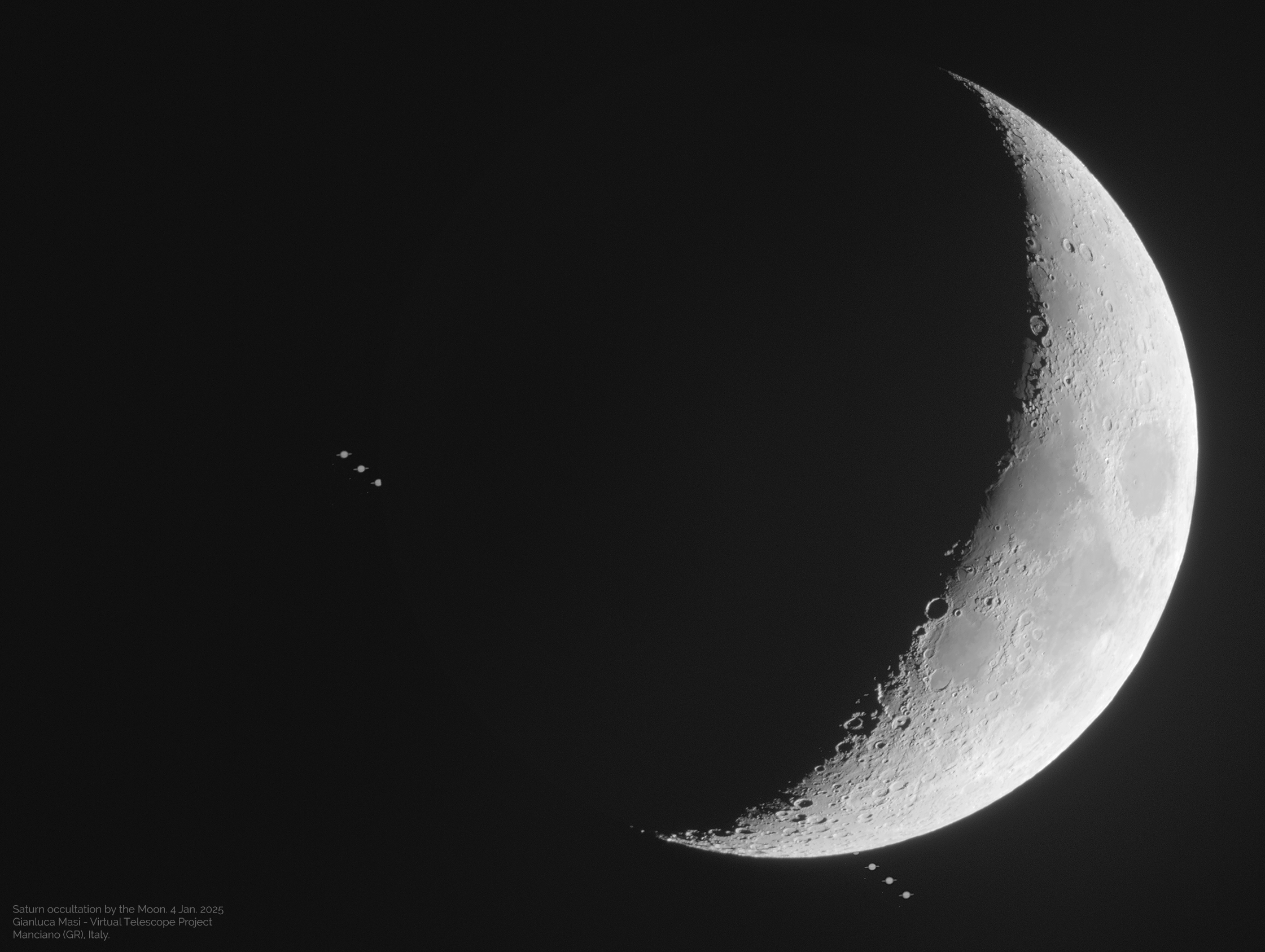A stunning new photo captures the moon and Saturn engaged in a cosmic game of peek-a-boo.
On Jan. 4, Saturn briefly hid behind the crescent moon, escaping the view of skywatchers in Europe, Africa, western Russia and eastern Greenland in an event known as a lunar occultation. Astronomer Gianluca Masi shared a composite photo taken during the event using the Virtual Telescope Project in Manciano, Italy.
The photo is composed of multiple images taken during the lunar occultation, capturing the event from beginning to end. The photo shows the progression of the moon moving in front of Saturn and masking the planet and its rings from Earth’s view. The ringed planet disappears behind the unilluminated part of the moon and then re-emerges from behind the illuminated side.
TOP TELESCOPE PICK:

Want to see the features of the moon up close? The Celestron NexStar 4SE is ideal for beginners wanting quality, reliable and quick views of celestial objects. For a more in-depth look at our Celestron NexStar 4SE review.
When a celestial body, such as a moon, planet or an asteroid passes in front of another celestial body and blocks its view (in this case, Saturn), it is called an occultation. The word is derived from the Latin occultäre, meaning to conceal or hide.
During the lunar occultation on Jan. 4, Saturn’s magnitude was +0.9, making the planet appear very bright and easily visible to the naked eye. Meanwhile, the waxing crescent moon was about 30% illuminated, according to In-the-Sky.org.
The images captured by the Virtual Telescope Project offer a stunning view of the moon’s deep craters and shadowed regions, and even captures the shining rings of Saturn. The moon appears incredibly large in the foreground of the image since it is located much closer to Earth than Saturn, the sixth planet from the sun, which, by comparison, appears as nearly a speck behind the prominent natural satellite.

While the pair could be seen in the night sky by the unaided eye, binoculars or a telescope would have allowed viewers to see details of the lunar surface, as well as Saturn’s rings and moons.
In fact, the lunar occultation of Saturn was only visible across certain parts of the world due to the moon’s close proximity to Earth, causing its position in the sky to vary slightly depending on a viewers’ location. However, for those outside of Europe, Africa, western Russia and eastern Greenland, the moon and Saturn still appeared close together all night, rising and setting around the same time.
The next lunar occultation will occur in the early hours of Feb. 1, 2025, visible only from extreme northern latitudes, including western Russia. After that, a lunar occultation of Saturn won’t be visible from Earth until 2031.
If you want to try taking your own photos of events like this one, check out our guides on how to photograph the planets and how to photograph the moon. And if you don’t have everything you need for shooting the night sky, check out our best cameras for astrophotography and best lenses for astrophotography.
Editor’s note: If you snap a great photo of the night sky you’d like to share with Space.com and our news partners for a story or image gallery, send images and comments to spacephotos@space.com.
Article by:Source –
















